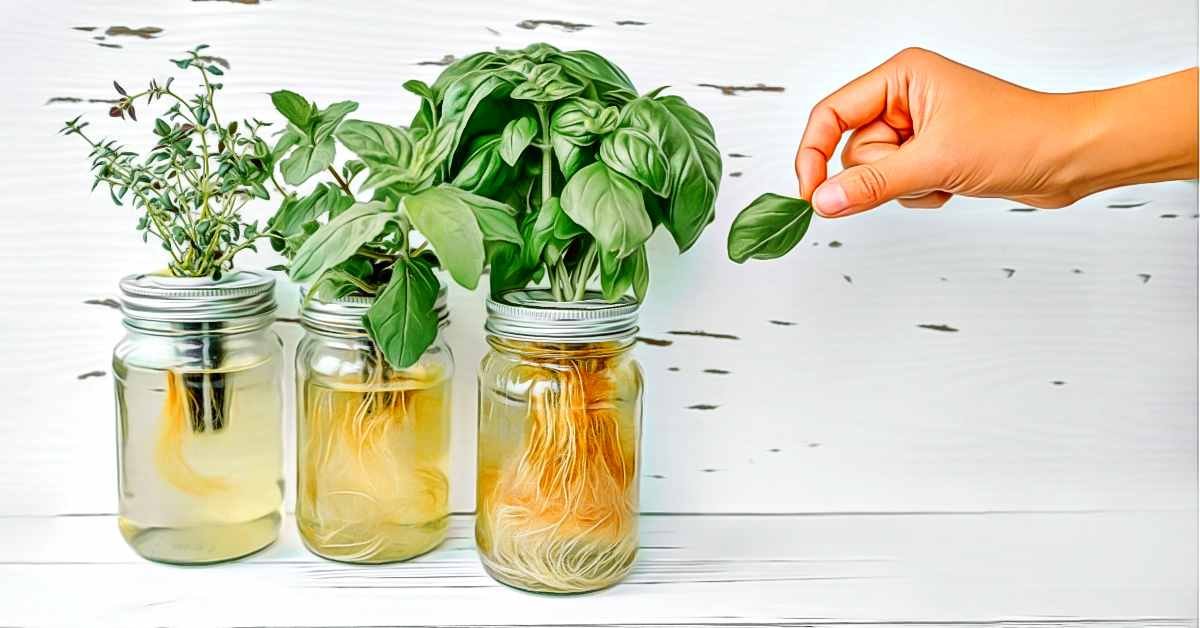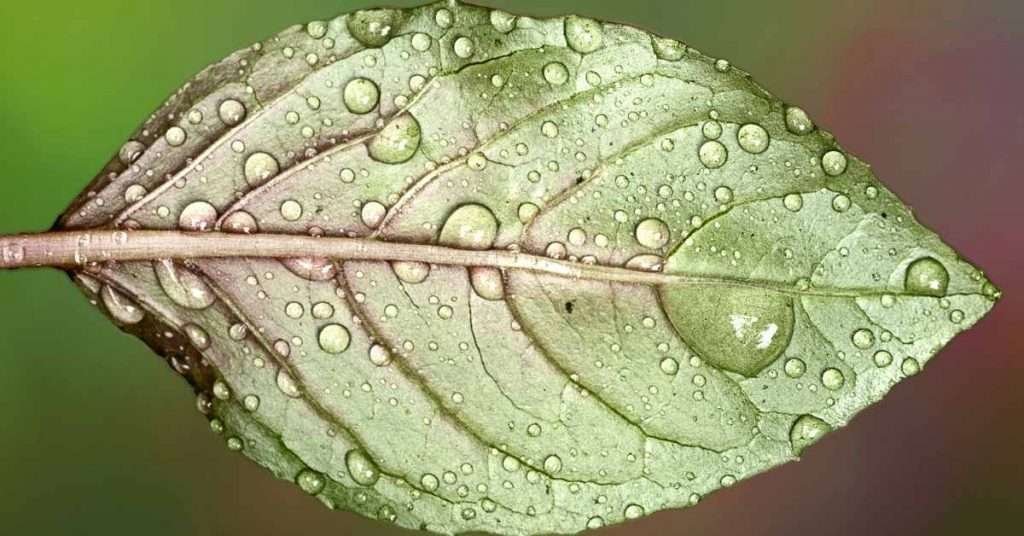
12 Herbs You Can Grow in Water
Italians say that herbs give a dish its character and that many dishes would be just an edible mixture of ingredients without them!
Yet, freshly picked herbal tea or fresh spice leaves that transform your dish from edible to delicious don’t have to be the privilege of those with a garden!
Many spices and herbs can be grown only with the help of a jar, water, and sunlight on the windowsill, where they will always be at your fingertips!
How to Grow Herbs in Water
Most herbs can be propagated vegetatively – by cuttings that you place in a water container. Using this feature, you can create your own herb garden in very little space! All you have to do is place the selected plant cuttings in transparent, preferably glass containers filled with water.
The cuttings should be 4 to 6 inches long, depending on the species. Be sure to remove the leaves from the lower part that you will immerse in the water, leaving only the bare stems.
The container should not be too big – it is enough that the herbs have enough space and that they are submerged a few inches in the water.
Make sure that the jar of herbs is exposed to sunlight for at least six hours a day, and occasionally cut off the tops of the herbs with scissors so that they can grow again.
You should change the water in the jar regularly, about every seven to fifteen days, to prevent the growth of algae and bacteria.
The cuttings can remain in the water for up to a year until they develop thick root veins that fill the container. After all, these are not aquatic plants, so they need soil for full growth. Therefore, replace them with new cuttings and transplant the old rooted ones into pots or give them to friends with a garden.
The types of herbs you can grow this way are numerous, and all of them can be included in the everyday kitchen. Here are some of the most popular ones!
Peppermint (Mentha Piperita)
Mentha piperita does not grow wild but is a hybrid of water mint (Mentha aquatica) and spearmint (Mentha spicata). Its jagged green leaves with menthol scents will serve you well as an addition to refreshing drinks and cakes or simply as a source of intoxicating aroma! Apart from being a delicious addition to drinks and other recipes, it has a wide range of health applications, e.g., it is useful for digestive problems, acute and chronic gastritis, enteritis, and calming. It can last up to a year in a glass container.
Oregano ( Oruganum vulgare)
A legendary spice from pizza but also many sauces and soups with a touch of the Mediterranean, oregano is a world-popular spice that will last a very long time in the water! If you take woody cuttings, they will stay fresh in water for several months but will not develop roots. Green cuttings harvested in mid-summer will last even longer because they can develop a root that can function in water for a while.
Moreover, the oregano cuttings continue to produce new leaves while in the water, giving you months of harvests of fresh spice!
If you want to try this method with oregano, keep the container with the cuttings on a south window because oregano needs a lot of suns!
Sage ( Salvia Officinalis)
Medicinal sage is a precious perennial plant with a pleasant smell, gray-green velvety leaves, and small purple flowers, widely used in medicine and the cosmetic industry. Due to its antiseptic and antibacterial effects, sage has long been used to treat rheumatism, bronchitis, tuberculosis, psoriasis, and eczema.
Except for making tea from fresh leaves, sage can be used as an addition to dishes with eggs, chicken, lamb, or pineapple.
Unlike the previous spices, sage doesn’t need a lot of water or sunlight, so three hours a day in a lighted area will be enough to keep it fresh for a few months.
Basil (Ocimum Basilicum)
A popular, fast-growing annual Italian herb, basil grows well in water and can be used in many recipes, including sauces and soups. Culinary recommends it as an addition to potato, corn, cauliflower, and eggplant dishes.
Basil tea is used against coughs, kidney diseases, headaches, depression, and alleviating menstrual problems.
If you get fresh basil cuttings at the beginning of the season and put them in water, you can pick leaves until the fall. All you need to do is ensure it gets enough sunlight – at least six hours a day, if not more.
Stevia (Stevia Rebaudiana)
The South American herbaceous perennial Stevia likes light but not exposure to the relentless midday sun. Therefore, place the jar in a bright spot without direct sunlight, which can burn its tender gray-green leaves.
The Stevia leaves contain tevioside, rebaudioside A, and six other glycosides, which cause an extremely sweet taste, thirty times sweeter than sugar. You can use them to sweeten tea or coffee naturally. You can also make a powder from the dried leaves as a sweetener for all other dishes. Stevia is also a good choice for people with diabetes.
Unlike other herbs, this plant needs fresh water every second or third day because it quickly decays in stagnant water.
Thyme (Thymus Vulgaris)
It is best to take thyme cuttings in the middle of spring, put them in a glass jar, and place them on a south or west windowsill with hours of direct afternoon sunlight. Thyme is ideally combined with garlic, tomatoes, olives, and wine and thus forms the basis for Mediterranean cuisine.
A special advantage is that it does not mind long cooking, and fresh thyme leaves are used when cooking beef, lamb, game, and mushrooms. It gives the dish a spicy taste and, at the same time, neutralizes the fat.
7. Rosemary (Salvia Rosmarinus)
The aromatic and medicinal herb rosemary is easy to maintain, and although it thrives better in the sun, it doesn’t mind occasional shade. It will remain usable in a container with water for several months, even if you do not keep it on a windowsill but in a bright room.
The narrow, needle-like leaves are very aromatic, so just a few are enough to spice up a dish and give it a distinctive Mediterranean taste.
Rosemary tea reduces flatulence, cleanses the body of toxins, has a beneficial effect on the liver, and has a calming effect on the nervous system.
8. Lemon balm (Mellisa Officinalis)
You can use lemon balm to make a tea that calms and relieves symptoms of anxiety and indigestion, and all it needs is a few hours of sunlight during the day.
The cutting takes root in three or four weeks, but the root functions in water for at least another few months.
Fresh leaves are used for all dishes, where you can use lemon as a spice in salads, soups, vegetables, vegetable sauces, and mushrooms. They contain about 80 mg% of vitamin C and about 7 mg% of carotene, and much copper.
9. Coriander (Coriander Sativum)
Coriander is an annual plant from the sedge family with a characteristic and intense smell and taste. You should take cuttings before the plant begins to bloom since those with flowers will not stay usable for long.
It prefers a lot of solar energy and needs six to eight hours of sun daily. This aromatic plant is best combined with tomato dishes or any other recipes inspired by Mexican cuisine.
Coriander tea improves appetite, removes toxins, relieves allergies, and regulates blood sugar levels.
10. Lavender (Lavandula)
Another medicinal and aromatic herb desirable at home is gorgeously smelling lavender. If you take fresh lavender cuttings at the beginning of the season, they will survive in water and possibly even bloom in early summer.
It needs a lot of sun, fresh air, and fresh water every week, so placing it on a sunny window is best.
Lavender relieves symptoms of depression, migraines, spasms, and insomnia. You can use it as a spice in the preparation of sweets like cakes, tarts, ice cream., Dried lavender can also be used as a fragrance and an effective moth repellent.
11. Marjoram (Origanum Majorana)
Marjoram is a spice with a fresh citrus aroma that you add to the dish at the end because it loses its properties if you cook it for too long.
Since it can grow as a perennial plant in warmer climates, marjoram cuttings in a jar placed in a warm, bright room can survive for almost a year.
You can prepare tea from the flowers and hairy leaves against spasms, colds, and bronchitis. It has a sweet, somewhat floral scent and a sweet-bitter taste, slightly reminiscent of peppermint, so it is an excellent addition to soups, stews, poultry, potato, and fish dishes.
12. Lemongrass (Cymbopogon Citratus)
Lemongrass is a perennial sod-like tropical plant that looks like grass and has a bulb-like stem. If you cut off the stem close to the ground and place it in a water bowl, you will have a seasonal spice with a refreshing, discreetly citrusy taste.
Fresh, slightly crushed leaves can be used to prepare meat, fish, or seafood meals, while shredded leaves are a great addition to fresh salads.
Lemongrass tea helps control cholesterol, reduces digestive problems, and alleviates unpleasant body odors.






